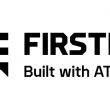Are we there yet?
Next month will mark eight years since the 9/11 attacks, the fateful day when the United States learned to fully appreciate its vulnerability to terrorism — and the shortcomings in its emergency communication systems, which were overloaded and glaringly lacking interoperability.
Immediately, the federal government took action, greatly increasing security measures at airports and creating the Department of Homeland Security (DHS). New federal grants were established and funded to address the situation, with a good chunk of the money used for emergency communications.
But such preparations proved to be insufficient in 2005, when another catastrophe — attributable to Mother Nature, not terrorists — hit the United States. Hurricane Katrina ravaged the Gulf Coast in unprecedented fashion. Katrina forced the first-responder community to re-examine its communications systems, backup alternatives and operating procedures, particularly in regard to those times when even hardened terrestrial networks are incapacitated by disaster.
Thus, at a time when the need for emergency-communications upgrades normally might be waning after 9/11, Katrina’s landfall and devastating impact caused elected officials and the first-responder community to refocus on the issue. In addition to continued funding for existing programs, new initiatives were started at the local, state and federal levels.
Their impact has been evidenced on several occasions in smaller-scale incidents, such as the communications success stories emerging from the series of hurricanes that hit Florida in 2004 and the California wildfires and the Minneapolis bridge collapse of 2007.
But a nagging question for first-responder communications officials remains: Is the U.S. prepared to handle the next mega-scale disaster? While myriad reasons were given to support their beliefs, those interviewed for this article were virtually unanimous in their conclusions.
“I’m convinced that we’re in better shape than we were for the last major disaster, but that really means — for the most part — only a little better,” said David Boyd, director of the DHS’s Command, Control and Interoperability Division (CID). “There’s still a great deal that needs to be done. [To paraphrase] Winston Churchill, we’re kind of beginning to approach the end of the beginning.”
Dick Mirgon, president-elect of the Association of Public-Safety Communications Officials (APCO), echoed this sentiment.
“We are light years ahead of where we were during that last major crisis of 9/11 and even Katrina,” Mirgon said. “However, we’ve got light years to go.”
PROGRESS TO DATE
After 9/11, “interoperability” immediately became the number-one buzzword within the Beltway regarding emergency communication. After all, within a half hour of the airplane hitting the second tower in the World Trade Center, New York Police Department (NYPD) units were ordered to leave the area, because helicopter observers assessed that the buildings would collapse. But as police officers evacuated the World Trade Center, many passed firefighters still entering and climbing the building, who accounted for a large portion of the more 300 firefighters who died during the tragic incident.
Details of those chaotic moments continue to be debated. Some officials say firefighters were given evacuation orders that either were not received or simply were ignored by the selfless individuals focused on making heroic rescue attempts in the towers that were destined to crumble.
What was acknowledged quickly was that the NYPD and the city’s fire department did not communicate with each other on that day as well as they should. Today, the working environment in New York City has improved greatly, as evidenced during a May 17 exercise in which a unified command post was established involving disparate first-responder agencies — something that did not occur on Sept. 11, 2001 — in reaction to a mock explosion in a transit tunnel.
“One of the things that was criticized after 9/11 was that there was not as much coordination between agencies as there could have been,” said NYPD Deputy Chief Charles Dowd. “That’s something that’s changed dramatically over the last eight years … If something like that happened today, you’d see a very different response.”
Technologically, interoperable communications have never been easier, as the manufacturing industry has flooded the marketplace with a variety of gateways and other solutions that allow agencies to talk with one another, even if they use different technologies and operate on different frequency bands. While New York City utilizes such technology, having a unified command post is a vital component to achieving the quickest and best-informed responses, Dowd said.
“At the end of the day, there’s no better interoperable communication than face to face,” Dowd said.
Indeed, the problem with depending on technology is that chaotic situations arise when it is not available, something that was underlined during the aftermath of Katrina, when the powerful winds and widespread flooding effectively knocked out all commercial power and communications.
“In Katrina, we didn’t even have enough of a system in operation to provide basic communications, much less interoperability,” Boyd said.
The hardened public-safety network in New Orleans was designed to handle such circumstances, but the network went down when the backup power generator supporting the network’s key base-station site was punctured by flying debris. Even if that unfortunate scenario had not occurred, the site likely would have failed within hours, because the air conditioning needed to keep the communications equipment from overheating was dependent on commercial power, not an independent power source.
“Katrina changed the way we look at a lot of things,” said John Powell, chairman of the National Public-Safety Telecommunications Council’s Interoperability Committee, noting that backup-power requirements for mission-critical communications were increased substantially after the hurricane hit the Gulf Coast.
THE ROAD AHEAD
Exacerbating the problems in the Gulf Coast was the inability to get personnel into the area to fix the communications systems. Thanks to miscommunication between local, state and federal agencies — as well as some concern for individuals’ safety, as reports of gunshot fire were among the many unsubstantiated rumors being spread at the time — those with the ability to resolve the communications were not allowed in New Orleans for several days.
“The technicians from the two-way radio shops, from the city shop and from Verizon, AT&T and Sprint were all sitting there with new base stations — M/A-COM flew the stuff in, and Motorola flew the stuff in,” mobile wireless consultant Andrew Seybold said. “It was all sitting there.
“The biggest issue I have is that we have gotten no further in treating the technicians that put this stuff back on the air like first responders. To me, that is a major issue, because, if they’re not given access, they can’t get the communications systems back on the air.”
This unfortunate situation underlines the need for established standard operating procedures — and the need to get this information disseminated to the proper people before they have to make decisions, said Anthony Mangeri, a consultant and member of the faculty at American Military University’s school of public safety and health.
“Remember, no matter what system I put in place, unless that local police officer … knows what that essential-employee ID looks like and what’s coming his way, he doesn’t have the training,” Mangeri said. “And if he doesn’t have the training, then the system doesn’t work.”
All interviewees for this article stressed the need for more training, but each also acknowledged how difficult it is to accomplish, particularly given the current economic environment. When first-responder agencies are struggling to pay for existing resources needed to maintain core day-to-day operations, it’s difficult to justify paying personnel overtime to coordinated and participate in large training exercises such as the one conducted in May in New York City.
“Things like this are great drills, but you just can’t do them as often as you’d like,” Dowd said. “Tabletop exercises are almost as useful from a command-and-control perspective, and they don’t cost a lot.”
Of course, to conduct a tabletop exercise, willing participants are needed. For the most part, interviewees believe that the turf wars that have impeded interoperability in the past have subsided greatly over the past decade, largely because federal funding for technology upgrades requires regional concensus on interoperability. But parochialism still exists in some places.
“It’s not all gone, but you see pockets of regions, counties and areas that have overcome that,” said Harlin McEwen, chairman of the International Association of Chiefs of Police’s Technology Committee. “But there are still places that are going to fight with each other and places that don’t want to talk to each other, and I don’t think that’s ever going to change.
LONG-TERM FUTURE
Assuming agencies are willing to interoperate, technologies to make it happen are becoming more prevalent and less expensive. In addition, McEwen — who also serves as chairman of the Public Safety Spectrum Trust (PSST), licensee for public safety’s nationwide 700 MHz broadband spectrum — said he believes a nationwide broadband network can be used as a bridge to link disparate voice systems.
“I just don’t believe that, in the long run, the interoperability issue in land mobile will ever be solved other than by tying together … disparate systems,” McEwen said.
APCO’s Mirgon also expressed optimism about the role of broadband in providing new applications to public safety. However, the key is for first-responder broadband networks to be built to a national standard, so that the incompatibility issues that have arisen between proprietary voice networks are not repeated in the broadband arena.
“[A broadband network] has the potential of solving a lot of interoperability problems,” Mirgon said. “It also has the potential of putting us right back where we started from — not only not solving the problems but taking us right back to square one.”
One area of improvement in responding to disasters are the resources that can be deployed to an area that has seen its fixed infrastructure compromised. Satellite communications have become more sophisticated — SkyTerra has established push-to-talk talkgroups for a number of first-responder agencies nationwide — and those technologies should become much more user-friendly and more available with the introduction of robust services next year leveraging next-generation satellites.
Terrestrially, mobile communications vehicles offering multiple communications paths continue to be more commonplace and pre-deployed on a regional basis to provide help more quickly after an incident. In addition, the response to disasters from outside the area — sometimes from several states away — has been notable. While such help always is appreciated, Powell said he would like to the development of smart cards that could be given to an incident command post detailing the equipment and personnel resources that have arrived on the scene.
“That is a huge issue that should be a much higher priority for the federal government — a standardized ID card,” Powell said. “When a responder gets to the scene of an incident, you stick that smart card into somebody’s laptop, and it tells you what he is trained and certified to do, as well as his authorizations.”
EVER READY — OR NEVER READY?
Regardless of what technologies are used, the key to successful disaster response and recovery is having standard operating procedures (SOPs) and personnel who are trained to implement the procedures, instead of having to make decisions while in crisis mode, Mangeri said.
“Those SOPs and those emergency operations plans are extremely important,” he said. “I’d rather have the discussion [prior to an incident] than standing on the side of a road, looking at a nightmare and going, ‘Who does what?’ It has to be an integrated system — technology connected with training, and training connected with standard operating guidelines.”
No matter how many technological improvements are made and how much planning is done, there will always be tje possibility of a disaster scenario occurring that is not anticipated, McEwen said. However, thanks to the considerable efforts over the last decade, more contingencies are being planned for than ever before, he said.
“Obviously, we’re never going to be totally ready,” McEwen said. “But I do believe great improvements have been made.”
Related Stories
















